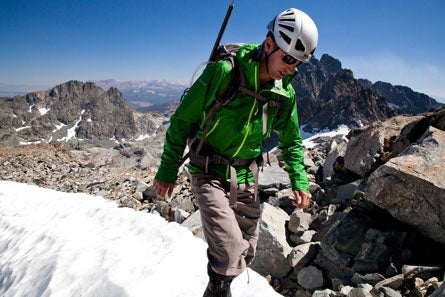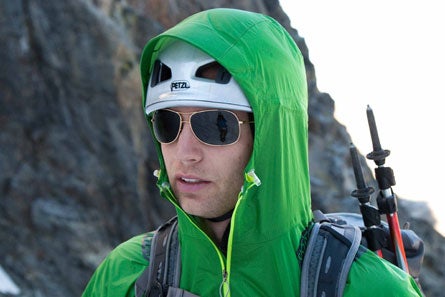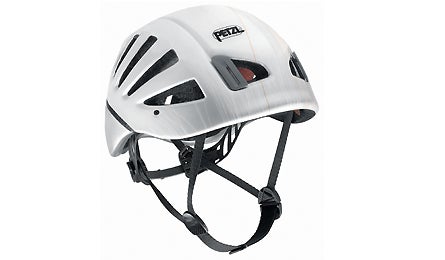Heading out the door? Read this article on the new Outside+ app available now on iOS devices for members! Download the app.

Gear Slideshow Marmot Super Mica1 200×170

Gear Slideshow Marmot Super Mica1 140×75

Petzl Meteor III Helmet (Courtesy Photo)
There are approximately eleven gazillion reasons not to wear a helmet, and every single one of them is bad. The most popular alibis, at least among my friends, fall into one of two categories: it’s either too heavy or too hot. By weighing only 8.5 ounces and feeling cooler on my head than a ball cap, the Meteor III turns both of these excuses on their head.
I was consistently surprised by the lightness of this helmet, and I would frequently check my bag because I thought I had accidentally left the helmet at camp. Credit the expanded polystyrene (instead of the usual hard plastic) liner and unique suspension adjustment system for the significant bulk of weight savings. Instead of the usual dial on the back to adjust the headband, there are two tabs that slide in and out. This system isn’t as easy to adjust single handedly while wearing mittens, but the decrease in weight is well worth it for me.
The chinstrap is easy to adjust and comfortable, and I especially liked that I could adjust with one hand without removing the helmet. If I need a bit more slack on a steep, uphill, icy slog, I don’t want to take off anything that could drop and skid a couple hundred meters to the talus below. The padding in the helmet is minimal, but even after wearing it for days on end in the Sierra, I never found it uncomfortable. Petzl claims the Meteor III is “the most ventilated climbing helmet available,” and after spending multiple weekends marinating in the cloudless Sierra summer sun, I don’t have much of a reason to disagree. On the other hand, should you actually get too cool, there’s enough room to fit a skull cap underneath to retain some heat.
A lot of folks don’t think helmets are necessary unless you have a harness around your waist, but I believe you’d be silly not to wear one even during some Class III ‘hikes.’ Rockfall can happen quickly, and any combination of snow and granite (summertime included) can be dangerous. Speaking from the experience of three concussions and a litany of broken bones, accidents happen quickly and unexpectedly. Fortunately, the Meteor III renders itself practically unnoticeable once I have it on, so I wear it anytime we get off trail and steep.
The one major downside, however, is cost. This price tag is about twice that of others in the market, but to me it’s worth it. I have buddies who will leave their lower-cost helmet at home to save weight, and then wish they had brought it along when we have a mid-trip change of plans. A second caveat: you need to be careful not to strap it to the outside of your pack and then slam it against a boulder, as the lightweight liner needs a little more TLC than some of its peers. Bottom Line: With its combination of superior comfort, excellent ventilation, and lightweight design, you get what you pay for in the Meteor III: one of the best mountaineering/climbing helmets I’ve ever worn.